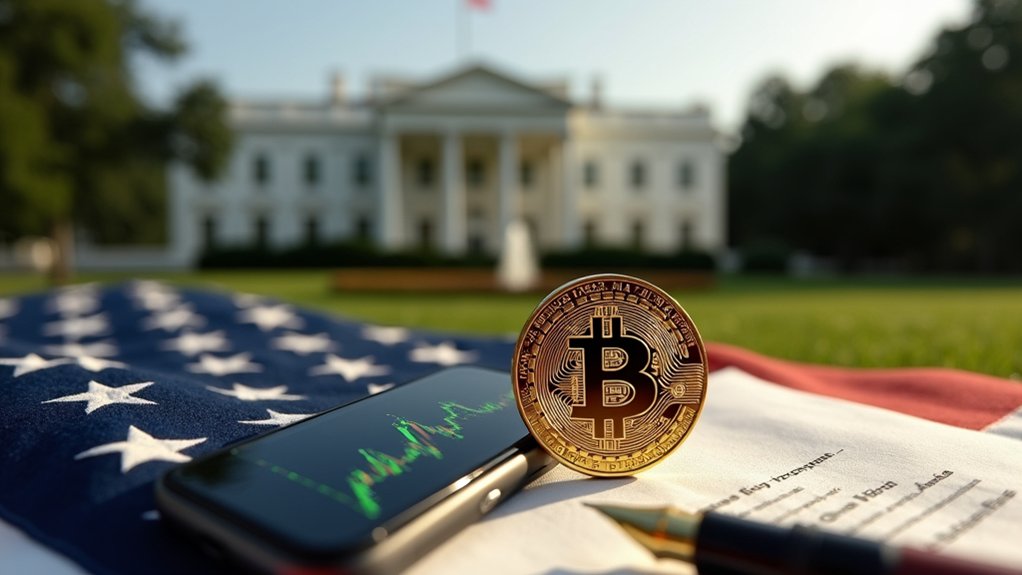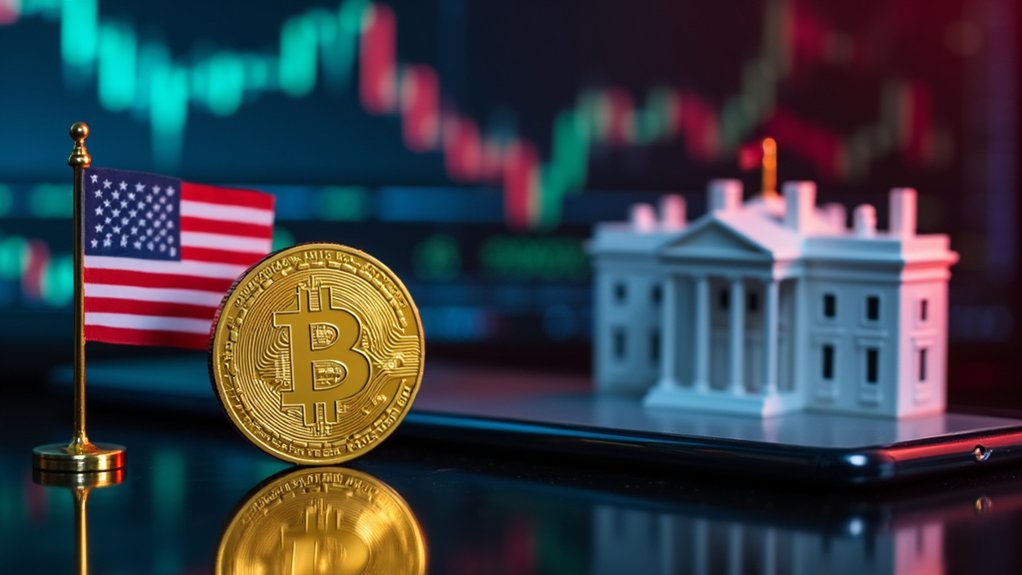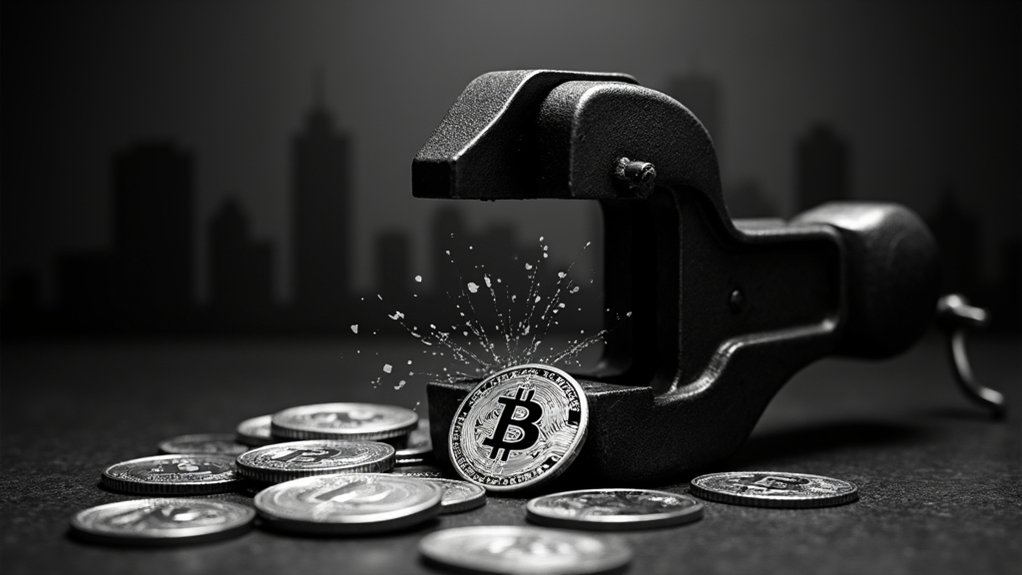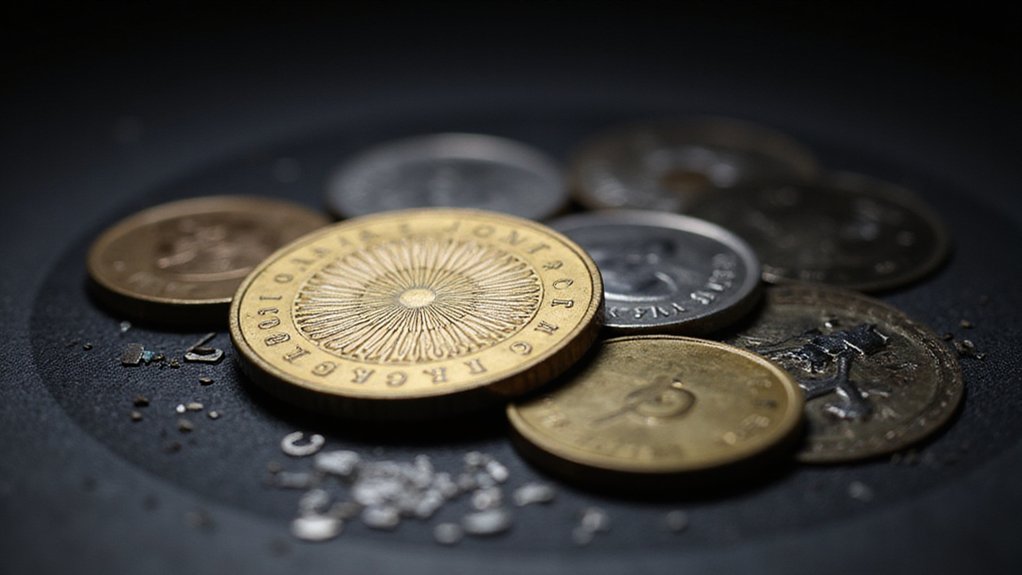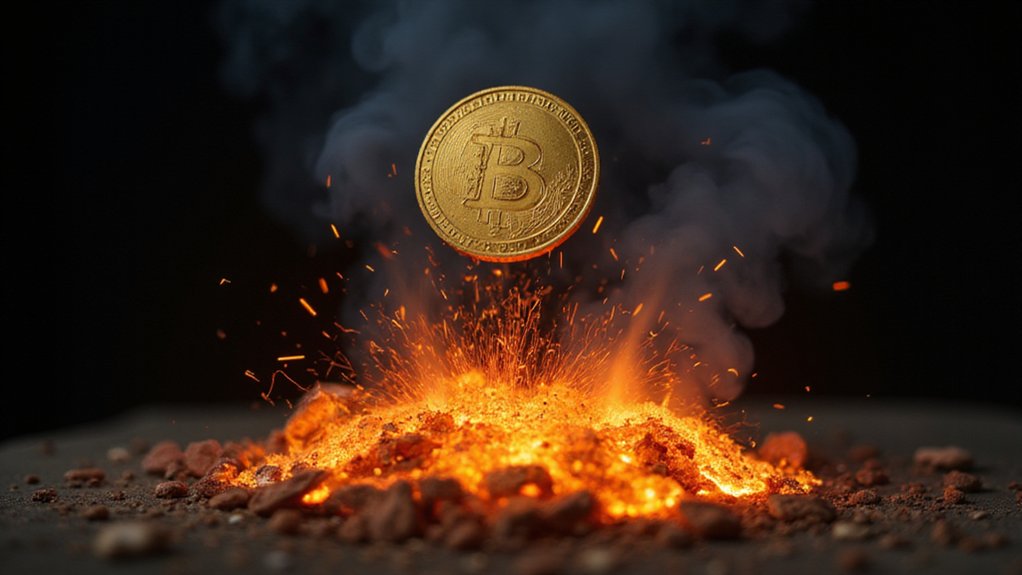Trump’s stance on cryptocurrency represents a dramatic policy reversal—transitioning from skepticism to enthusiastic embrace. His administration now champions a Strategic Bitcoin Reserve initiative (targeting 5% of circulating supply), expands domestic mining operations, and unequivocally rejects central bank digital currencies as “un-American.” The appointment of David Sacks as Crypto Czar solidifies this pivot, establishing an interagency framework for clearer regulations while rolling back previous restrictions. This seismic shift in federal financial positioning has already catalyzed a trillion-dollar surge in cryptocurrency valuations since the election.
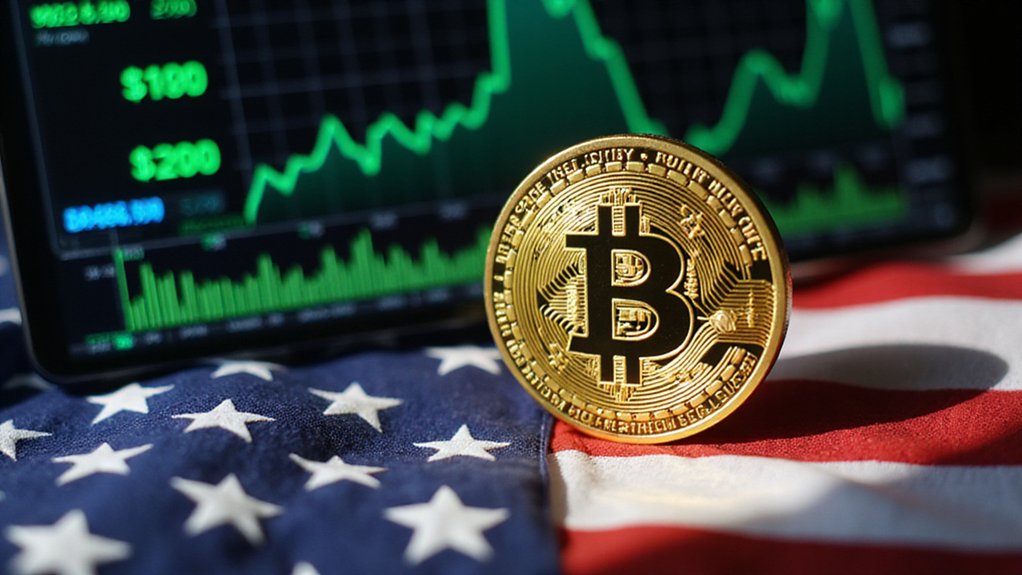
How quickly the pendulum swings in the domain of cryptocurrency policy. The shift from the Biden administration’s regulatory wariness to the current administration’s bullish embrace of digital assets represents one of the most dramatic policy reversals in recent financial history. Former President Trump, once a vocal crypto skeptic, has executed a remarkable volte-face, signing a January 2025 executive order designed to cement American “leadership” in the burgeoning digital asset space.
The cornerstone of this new approach manifests in the proposed Strategic Bitcoin Reserve and Digital Assets Stockpile—an ambitious initiative modeled after petroleum reserves that would accumulate approximately 5% of Bitcoin’s circulating supply. Senator Lummis’ Bitcoin Act provides the legislative framework for this unprecedented governmental crypto position. This reserve will be capitalized using Treasury-owned bitcoin obtained through forfeiture proceedings, ensuring no additional taxpayer costs. The administration’s stance on central bank digital currencies remains unequivocally negative, with Trump characterizing CBDCs as fundamentally “un-American” while simultaneously championing private-sector stablecoins as the market-oriented alternative.
America’s crypto policy pivot centers on a Strategic Bitcoin Reserve while rejecting CBDCs as fundamentally un-American—a stunning reversal in federal financial positioning.
Domestic mining expansion constitutes another pillar of this crypto strategy, with pledges to increase America’s share of global Bitcoin mining from its current 37% through energy incentives and regulatory concessions. The value of cryptocurrencies has surged to more than one trillion dollars since Trump’s victory at the polls. This mining push dovetails with broader “energy dominance” objectives, linking digital and physical infrastructure in ways previous administrations steadfastly avoided.
The regulatory apparatus itself is undergoing wholesale transformation under newly appointed officials, including venture capitalist David Sacks as “Crypto Czar,” who chairs an interagency working group populated with Treasury and Commerce secretaries. This cohort aims to develop “clear rules” while preventing what the administration characterizes as “unlawful crackdowns” on industry participants. The administration has also begun regulatory rollbacks of previous policies seen as hostile to cryptocurrency innovation and growth.
Political positioning underpins much of this agenda, with Trump’s campaign promise to make America the “crypto capital of the world” now manifesting in concrete policy. The administration’s first White House crypto summit represents the symbolic culmination of this strategic pivot—one calculated to differentiate from Democratic approaches while repositioning America globally against Chinese and European regulatory frameworks.
Frequently Asked Questions
How Do Trump’s Crypto Views Compare to Other Political Candidates?
Trump’s crypto stance stands in stark contrast to many Democratic counterparts who typically favor heightened regulation and oversight.
While progressives often approach digital assets with caution (citing environmental concerns and potential financial instability), Trump has executed a remarkable volte-face from his earlier skepticism to championing a national Bitcoin stockpile.
This pro-innovation position—emphasizing American technological leadership rather than regulatory guardrails—represents a distinctive approach in the political landscape, where cryptocurrency often transcends traditional partisan boundaries.
What Specific Cryptocurrencies Has Trump Personally Invested In?
Despite his evolving crypto enthusiasm, Trump’s personal portfolio lacks Bitcoin—a curious omission for someone positioning himself as crypto’s political champion.
His holdings consist primarily of donated memecoins, including TROG (valued around $978,000) and the ironically underperforming TRUMP token ($120,000). His more conventional crypto investments include Ethereum, Ripple, and stablecoin USDC.
This memecoin-heavy portfolio remains largely unaffected by broader market rallies—a proof to their idiosyncratic value propositions.
How Might Trump’s Crypto Policies Affect Global Markets?
Trump’s crypto policies—particularly the Strategic Bitcoin Reserve establishment and regulatory rollbacks—could dramatically reshape global markets.
By positioning the U.S. as a crypto capital, these initiatives may trigger capital flows from traditional financial centers toward American digital asset ventures.
International regulatory frameworks could face pressure to harmonize with U.S. standards, while competing nations might accelerate their own digital currency development.
Markets may experience heightened volatility initially, followed by potential stabilization as policy certainty emerges.
Has Trump Changed His Cryptocurrency Position Over Time?
Trump’s position on cryptocurrencies has undergone a remarkable metamorphosis. Initially skeptical—questioning their fundamental value and legitimacy in 2019—he’s pivoted toward enthusiastic advocacy.
His administration has shifted from regulatory ambivalence to implementing pro-crypto executive orders, establishing a Strategic Bitcoin Reserve, and even launching personal cryptocurrency projects.
This evolution mirrors broader market shifts, as digital assets moved from financial fringe to mainstream investment vehicles.
The volte-face suggests either evolving understanding or, perhaps more cynically, political opportunism.
What Crypto Regulations Would Trump Likely Implement if Re-Elected?
If re-elected, Trump would likely implement a laissez-faire crypto regulatory framework prioritizing “responsible growth” over strict oversight.
His administration would probably establish a Strategic Bitcoin Reserve (targeting one million BTC), create inter-agency coordination mechanisms led by industry-friendly appointees, roll back enforcement actions, provide regulatory clarity through delineated SEC/CFTC jurisdictions, and emphasize public-private partnerships.
This hands-off approach—coupled with federal crypto stockpiling—would represent a dramatic pivot from current regulatory postures, effectively treating Bitcoin as a sovereign asset class.

